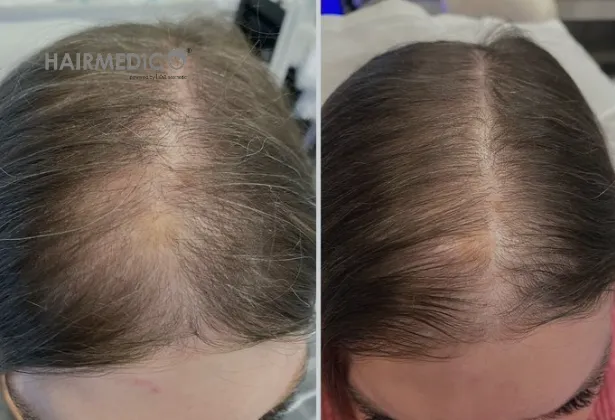
Hair loss, especially when advanced, can impact more than just physical appearance—it often affects confidence, self-image, and daily life. In 2025, hair transplant procedures have reached new heights in precision and aesthetic outcomes. Among the most comprehensive solutions is the 5000 grafts hair transplant, a transformative procedure for those with significant hair thinning or baldness.
This article offers a complete, data-driven look at what to expect before and after a 5000 grafts hair transplant, including the medical process, healing timeline, real-world results, and cost considerations.
A 5000 grafts hair transplant refers to the relocation of approximately 5000 follicular units—each containing one to four hairs—from a donor area (usually the sides or back of the head) to balding or thinning areas. This procedure is typically recommended for:
Advanced hair loss classified as Norwood Stage V–VII.
Patients needing full coverage from the hairline to the crown.
Individuals with strong donor hair availability.
Modern techniques such as Follicular Unit Extraction (FUE) and Direct Hair Implantation (DHI) allow surgeons to extract and implant large volumes of grafts while preserving natural angles and density.
Not everyone qualifies for a high-volume transplant. Candidates should meet several criteria:
Sufficient donor hair density.
Good general health and no underlying scalp disorders.
Realistic expectations and an understanding of the recovery process.
An initial consultation, including digital scalp analysis and blood work, will determine eligibility.
A 5000 grafts transplant is typically completed in one or two sessions over the course of a full day. The process includes:
Design and Planning: The surgeon draws a customized hairline and defines the implant area.
Anesthesia and Graft Extraction: Local anesthesia is administered, and grafts are carefully extracted using micromotor punches (for FUE) or implanters (for DHI).
Graft Sorting and Hydration: Extracted follicles are stored in a growth-preserving solution and categorized by size and type.
Implantation: Grafts are inserted into micro-incisions or directly implanted using DHI pens.
The procedure may last between 8 and 12 hours, depending on the patient’s scalp and technique chosen.
Aftercare plays a crucial role in the success of the transplant. Patients receive detailed post-operative instructions, typically including:
Day 1–3: Redness and mild swelling, managed with anti-inflammatories.
Day 4–7: Gentle washing can begin; avoid scratching or touching the graft area.
Week 2: Formation of scabs; patients should follow special care instructions to avoid dislodging grafts.
Weeks 3–4: Transplanted hairs may shed—this is the "shock loss" phase.
Month 3–6: New hair begins to grow in fine strands.
Month 9–12: Results become visibly fuller and more defined.
Month 12–18: Final maturation phase, with complete thickness and natural integration.
A 5000 grafts transplant can yield dramatic and permanent results. Patients often achieve:
A fully restored hairline and frontal zone.
High-density mid-scalp and crown coverage.
A symmetrical and natural appearance with undetectable graft placement.
You can explore authentic transformations in the HairMedico Before and After Gallery.
The cost of a 5000 grafts transplant in 2025 depends on several factors:
Geographical Location: Clinics in Turkey, India, and parts of Eastern Europe offer world-class service at a fraction of Western prices.
Surgical Technique: DHI often comes at a premium over FUE due to its precision tools.
Clinic Reputation and Technology: Advanced equipment, experienced surgeons, and high sanitation standards contribute to higher costs.
Estimated price range:
Turkey: $2,500–$5,000
Europe/USA: $6,000–$15,000
Make sure to evaluate what's included (accommodation, transport, post-op care) when comparing clinic packages.
Although hair transplants are generally safe, potential risks include:
Infection (rare with sterile techniques).
Uneven density or graft survival issues.
Temporary numbness or inflammation.
Choosing a qualified and experienced clinic minimizes these risks and ensures the best long-term outcome.
A successful 5000 grafts transplant depends heavily on the skill of the medical team. Key factors to evaluate include:
Surgeon Credentials: Board-certified, preferably with ISHRS or ABHRS affiliation.
Patient Reviews and Photos: Before-and-after galleries should show consistent and natural-looking results.
Clinic Standards: Clean, accredited facilities with up-to-date technology.
HairMedico, a leader in international hair restoration, is known for delivering high graft-count procedures with artistic precision. Explore real patient cases via the HairMedico Before and After Gallery.
A 5000 grafts hair transplant is not just a cosmetic fix—it’s a restoration of confidence and identity. With the advancements available in 2025, patients can expect natural results, minimal downtime, and a permanent solution to hair loss. However, the success of the procedure depends on informed decisions, expert execution, and careful post-op care.
If you're considering a hair transplant of this scale, begin your research with trustworthy sources, and consult with a board-certified specialist to evaluate your goals and expectations.
For reliable insights and to see what’s possible, visit the HairMedico Before and After Gallery.